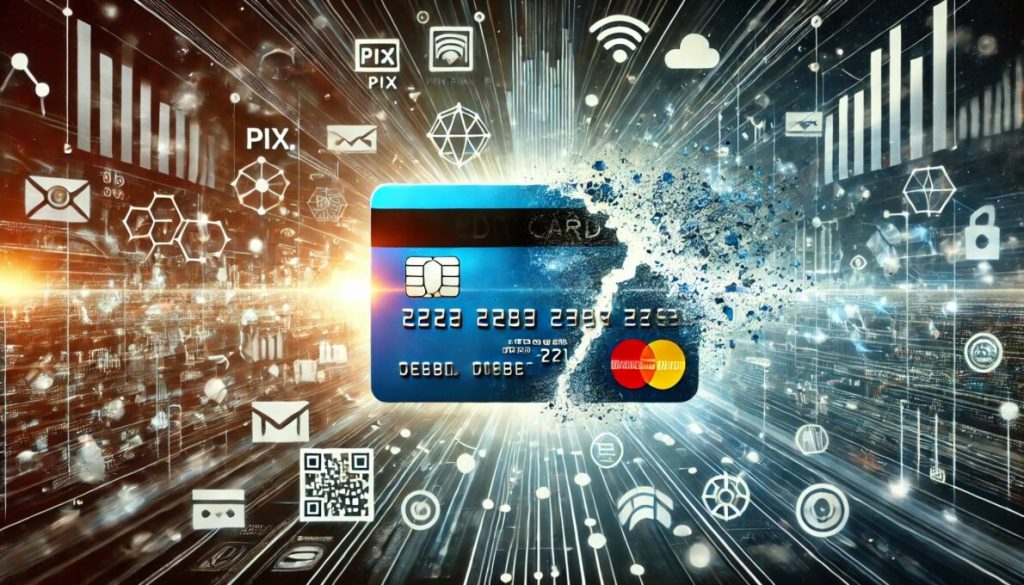In the ever-evolving digital landscape, digital cards are becoming increasingly popular and are fundamentally changing the market in the United States. As digital replacements for traditional physical cards, they offer convenience, speed, and customization, which appeal to the modern consumer. In this article, we will explore four key trends in digital cards that are redefining this sector. We’ll take a closer look at how these trends are driving innovation and reshaping consumer expectations.
Anúncios
Rise of personalized digital experiences

The growing consumer demand for personalization is a significant trend in the digital card industry. In an age where individuality is celebrated, customers yearn for experiences tailored specifically to their preferences. Digital cards are stepping up to meet this demand by allowing users to personalize key aspects such as designs, messages, and even functionalities.
This trend is largely driven by advancements in technology, which provide the flexibility and tools needed to create hyper-personalized content. Brands are leveraging data insights and artificial intelligence to understand consumer habits, allowing them to offer digital cards that resonate on a personal level. Consequently, personalized digital cards are becoming valuable tools for brands seeking to enhance customer loyalty and satisfaction.
Anúncios
Integrating AI for smarter solutions
Artificial intelligence (AI) has made significant inroads in the digital card sector, marking another trend that’s transforming the landscape. AI’s ability to process and analyze large amounts of data means digital cards can now offer smarter, more predictive solutions to users. This integration facilitates real-time customization and recommendations, enhancing user engagement and satisfaction.
For businesses, AI opens doors to deeper consumer insights, enabling more strategic decision-making. By collecting and analyzing data on how digital cards are used, companies can refine their offerings, making them more relevant to target demographics. Consequently, AI-powered digital cards are not only elevating user experiences but are also optimizing operational efficiencies for businesses.
Eco-friendly alternatives revolutionizing the market
As environmental awareness increases, the demand for sustainable solutions is also rising, impacting various industries including digital cards. An eco-friendly focus is emerging as a significant trend, with digital cards providing a more sustainable alternative to their plastic counterparts. This shift is driven by innovative designs that emphasize zero waste and reduced carbon footprints.
Digital cards eliminate the need for physical production, thus minimizing environmental impacts associated with traditional card manufacturing. They align with eco-conscious consumer values, which are increasingly playing a pivotal role in purchasing decisions. By opting for digital, consumers can enjoy the same functionalities without contributing to environmental degradation.
Enhancing security through blockchain technology
Security remains a primary concern for digital transactions, and digital cards are no exception. As such, blockchain technology is emerging as a pivotal trend in enhancing the security of digital cards. This decentralized ledger system offers unparalleled security features, which ensure data integrity and protection from fraud.
Blockchain provides a transparent and immutable platform, mitigating the risks associated with unauthorized transactions and data breaches. With increased data security, consumers gain confidence in using digital cards for their transactions, fostering wider adoption and trust. This secure nature of blockchain is giving digital cards an edge over traditional methods.
Contactless payments redefining convenience
The global pandemic has accelerated the demand for contactless solutions, with digital cards playing a key role in this shift towards a touch-free future. This trend underscores the convenience and speed that digital cards offer, allowing consumers to make transactions without physical interactions.
Contactless payment technology has gained momentum due to its safety and ease of use. Digital cards facilitate secure and swift transactions through near-field communication (NFC) or mobile wallet integrations, ensuring customers enjoy hassle-free experiences. This shift is particularly prominent in sectors like retail and hospitality, where speed and convenience are paramount.
As contactless payments become ubiquitous, businesses are increasingly incentivizing their use, offering rewards and exclusive promotions. This encourages adoption and usage while setting new expectations around convenience. As digital cards continue to embrace contactless technology, they are poised to remain a cornerstone of modern consumer transactions.
Future prospects and innovations
Looking ahead, the future of digital cards is ripe with potential and innovation. Emerging technologies such as augmented reality (AR) and the Internet of Things (IoT) are anticipated to further enrich the functionalities of digital cards, thereby expanding their scope and capabilities.
The convergence of these technologies with digital cards can lead to unique and immersive experiences. For example, AR can bring digital card content to life through interactive animations, while IoT can enable seamless integration with everyday devices, adding layers of convenience.
Ultimately, these innovations will foster greater consumer engagement, drive market growth, and redefine what digital cards can deliver. As these trends evolve, the digital card industry will not only redefine market standards but also lead the charge towards a more connected and personalized digital future.
